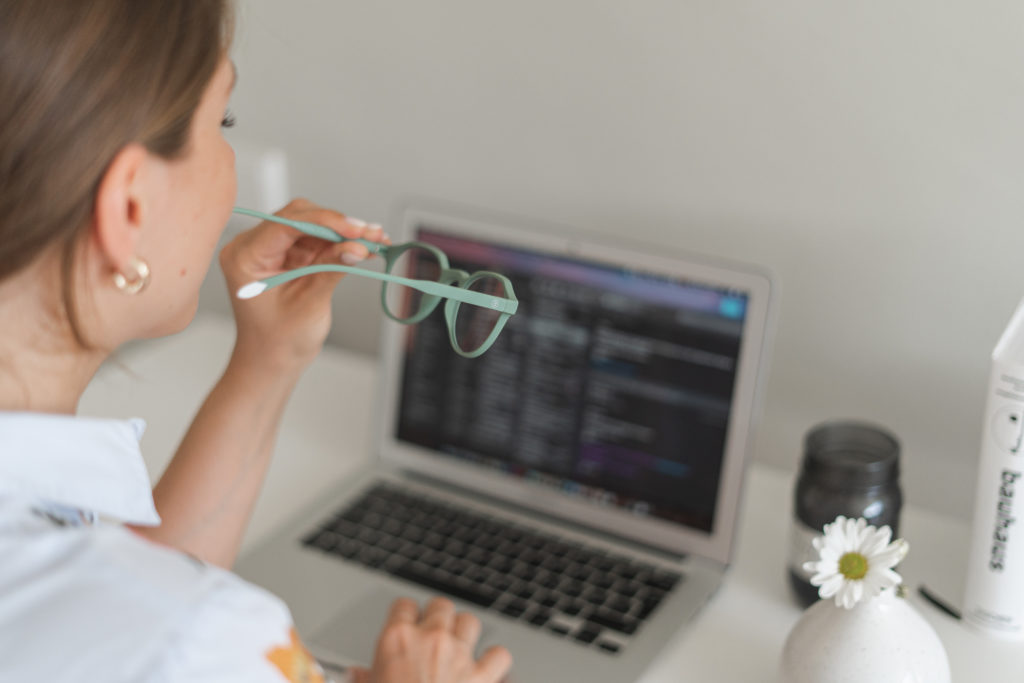
What are readers’ glasses?
Readers’ glasses (also known as reading glasses) are special-purpose eyeglasses developed to improve and protect our eyes when reading or looking at digital screens.
Instead of correcting vision problems as with prescription glasses, readers’ glasses improve our ability to read things up close, whether it is on paper or through digital devices.
How many different types of readers’ glasses can we find?
There are many different types of readers’ glasses [1] on the market, and we can actually find them everywhere, from drugstores to supermarkets, without a prescription. They tend to come with numbers (i.e. +1.75) which indicate the levels of magnification of the lenses.
There are many Reading Glasses Tests online that can guide us towards the strength we might need. Typically, the smallest number is the weakest magnification, and the higher the number is, the more it caters to people who have more serious problems with reading up close. The lens power tends to range from +1 to +4.
There are 4 common types of readers’ glasses:
- Bifocals or Multifocals: These are typically not fully magnified glasses, which may contain 2 or 3 different levels of magnification support.
- Reading sunglasses: both solar and reading glasses with customizable magnification support.
- Magnified glasses: The entire lens has magnification.
- Blue light glasses: lenses that block the artificial blue light from digital devices. They are also known as computer glasses or screen glasses.
As we said previously, none of these 4 types of glasses require prescription, although it is important to note that they are also available with prescription.
The main difference between reading glasses and blue light glasses
The main difference between the first 3 types and blue light glasses is that while it is not recommended to wear bifocals (or multifocals), reading sunglasses, or magnified glasses for long periods of time, we can actually benefit hugely from wearing blue light glasses for extended periods of time.

Do we need readers’ glasses to use digital devices?
Sometimes we don’t really need help reading close-up text; instead we need to protect our eyes from the constant glare and overexposure of artificial blue light that our digital devices emit, with computer glasses.
Let’s admit it: We read tons and tons of online text from our screens. Not only that, but these days the majority of us are constantly exposed to digital devices, be it watching TV, writing emails at work, scrolling through news updates on our cell phones, or reading a book on our tablets.
In fact, we’re perhaps more connected to our digital screens than ever before.
However, such levels of device usage can lead to some side effects known as Computer Vision Syndrome or Digital Eye Strain.
In particular, reading on our digital devices such as computer screens, smartphones, and tablets can increase the probabilities of suffering from headaches, neck and back problems, red and itchy eyes, and even dry eyes.
At Barner we specialize in blue light glasses specifically designed to protect our eyes when using digital devices for long periods of time.
Our high-quality CR-39 lenses block 100% of the blue light under 410nm and 45% of the blue light on the 410nm-450nm spectrum and reduce the glare from our screens. The results are quickly felt: Our eyes don’t have to focus so hard, and they feel more rested and relaxed.
Check out our collection of stylish blue light glasses and be part of the digitaly conscious generation!

Our sources:
[1] EDOW







